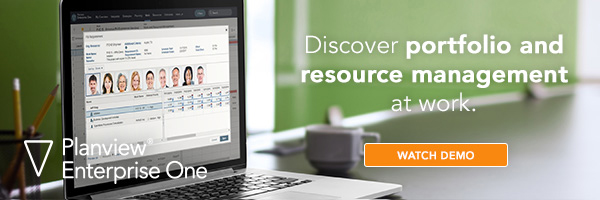
“A unified approach will enable every manager and worker to see what work should be done and what is required to achieve it, which is key to fostering not only alignment but engagement.” – Mark Smith, CEO and Chief Research Officer, Ventana Research
Throughout this blog series we have: explored the obstacles and challenges C-level executives face in regard to work and resource management (WRM), discovered how to eliminate silos and improve visibility throughout the organization, uncovered how WRM aligns with current digital transformation priorities, and detailed the benefits of effective WRM. To close out this series, I am going to let you know just how you can get started with WRM. And, if you previously missed them, you can catch up on parts 1-4 here:
- Part 1: An Executive Perspective on Changing Work and Resource Dynamics
- Part 2: An Executive Perspective on the Role of Work and Resource Management Technology
- Part 3: An Executive Perspective on Aligning WRM with Digital Transformation Priorities
- Part 4: An Executive Perspective on the Benefits of Work and Resource Management
Many organizations continue to use disparate systems and personal productivity tools, such as email and spreadsheets, to manage their work and resources. As a result, they’re struggling to keep up with the competition. To survive in our world of digital transformation, organizations must adopt a unified approach that improves visibility, aligns work and resources with the strategic plan, and allows teams to collaborate across departments and locations. However, adopting a new system can be intimidating for many, so let’s walk through the process step by step.
- Conduct an analysis of how things are done now.
Collect input from executive and leadership teams and consider any concerns and/or recommendations they may have. Then discuss your findings with technology and program management leaders to determine how they might support a transformational approach.
- Assess how strategies and initiatives guide how and what work is done.
Can you easily trace a particular assignment to its overall strategic goal? Or do you know the productivity of your employees and how they work? If no, it’s time for some improvements. Assess how work is done and what is being prioritized on a detailed basis (monthly, weekly, perhaps daily) to determine whether or not it is being strategically guided.
- Examine how effectively resources are being used to meet the executive team’s expected outcomes.
The best way to do this requires executives to outline their vision for delivering on a plan. They can then better identify and use the right resources to meet expected outcomes in a more effective manner.
- Consider the extent to which existing applications and technologies are enabling WRM.
While spreadsheets and email may be beneficial for personal productivity, they are quite a hindrance to business productivity. Consider how applications such as these should or should not be used to improve performance across the organization, encompassing executive as well as worker levels.
- Identify concrete steps forward and possible deployments that will improve the potential for WRM.
This may include eliminating certain applications, combining others, and evaluating options for new work and resource management technology. According to Ventana Research, “use this as an opportunity to ensure executive-leadership-driven, continuous improvement that optimizes the work, resources, and responsiveness of the entire organization.”
I hope you’ve enjoyed this 5-part blog series and are now ready to either get started with work and resource management or further extend the benefits of WRM within your organization. To learn more and see how Planview solutions make it possible for you to connect your strategy and delivery enterprise-wide, visit www.planview.com.






